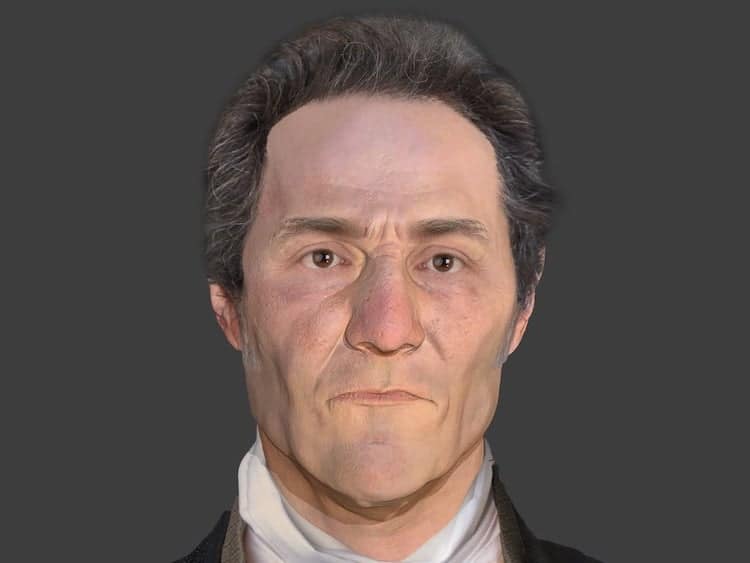
Photo: Parabon NanoLabs
The history of New England is steeped in folklore and superstition. While many people are familiar with the Salem witch trials of the late 17th century, which led to mass hysteria and nearly 20 people being hanged, another lesser-known panic swept the area 100 years later. The Great New England Vampire Panic is tied to the tuberculosis epidemic of the 1800s when victims were often labeled as vampires by locals looking for answers at a time when the disease was misunderstood.
This belief led the bodies of these victims to be exhumed so they could not escape their graves and continue to spread tuberculosis to others. Often, their bones would be rearranged in their coffins, with their femur bones crossed over their chest. Such was the case with the remains of John Barber, a 55-year-old farmer who died of tuberculosis.
These remains were discovered in 1990 by kids playing in Griswold, Connecticut. Over the years they have been studied extensively, and now Parabon NanoLabs and the Armed Forces DNA Identification Laboratory have worked together to reveal what this “vampire,” looked like.
After extensive DNA analysis that began in 2019, the labs have just published their findings. According to their research, Barber had fair skin, brown or hazel eyes, and brown or black hair. He was buried near his first cousin, Nathan Barber, whose DNA was also analyzed in the study. Nathan’s remains hadn’t been touched, showing that he hadn’t been considered a vampire. Unfortunately, John hadn’t had the same good fortune.

Photo: fergregory/Depositphotos (Not a photo of the actual event.)
“Communities hit with epidemics turned to folklore for explanations,” Parabon said in a statement. “They often blamed vampirism for the change in appearance, erratic behavior, and deaths of their friends and family who actually suffered from conditions such as porphyria, pellagra, rabies, and tuberculosis.”
It’s likely that John had been one of the first in his family to contract the deadly disease. When it then spread to the rest of the family, he was blamed as the root cause.
“Of course, J.B. was not a vampire, but he was believed to be undead in his grave, capable of leaving the housing of his grave, and [feeding] on living family members spreading consumption/tuberculosis,” said Nicholas Bellantoni, the archaeologist who excavated Barber’s remains in 1990. “This was a public health issue. Consumption was an epidemic in 19th-century New England. They knew nothing about germ theory and didn’t understand how the disease was spread. By going back into his grave and rearranging his skeletal remains they hoped to stop the disease from killing [his] family. Hence, this is not what we think of as ‘vampirism’ but done out of fear and love.”
The labs’ ability to learn so much about Barber’s appearance is a leap forward in forensic technology. Extracting DNA from bones that have deteriorated and are brittle is quite challenging. By successfully drawing DNA from these historic bones, these scientists have proved that though difficult, extraction is still possible.
h/t: [Smithsonian]
Related Articles:
Sitting Bull’s Great-Grandson Is Identified With New DNA Testing Method
Researchers Discover 1,000-Year-Old Burial of a Highly Elite Nonbinary Individual
Researchers Use DNA to Reconstruct the Faces of Three Ancient Egyptian Mummies
10,000-Year-Old Skeleton Found in Britain Has a Modern-Day Descendant Living Close By
